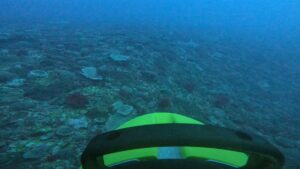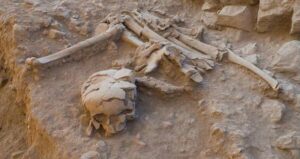“Ancient Secrets Revealed: Divers Unearth a Treasure Trove of 500,000-Year-Old Fossils in Mysterious Florida Sinkhole!”
In a study now published in the journal Fossil Studies, researchers from the Florida Museum of Natural History detailed the impressive collection of fossils Robert Sinibaldi and Joseph Branin discovered.

Florida Museum/Kristen GraceGiant armadillo fossils arranged in a partial reconstruction of the animal’s foot.
In total, 552 fossils dating back more than half a million years were pulled from the sinkhole. The specimens included the well-preserved bones of prehistoric animals like early horses, sloths, giant armadillos, and possibly even a new species of tapir.
One of the fossils revealed the massive foot of Holmesina septentrionalis, an armadillo that could reach 475 pounds. Scientists were surprised to see that the foot had features of an earlier, smaller Holmesina ancestor.
“This gave us more clues into the fact that the anatomy kind of trailed behind the size increase,” Rachel Narducci, a vertebrate paleontology collections manager at the Florida Museum, stated in the press release. “So they got bigger before the shape of their bones changed.”
Another key fossil found in the sinkhole was a skull from what may be a previously unknown tapir species. “We need more of the skeleton to firmly figure out what’s going on with this tapir,” Richard Hulbert, the lead author of the study, stated in the press release. “It might be a new species. Or it always could just be that you picked up the oddball individual of the population.”

Florida Museum/Kristen GraceA fossil from what may be a new tapir species.
Meanwhile, the overwhelming majority of the fossils belong to an early horse species. Because these animals typically live in grasslands rather than the dense forests that make up the area around Big Bend, researchers believe that this region looked vastly different half a million years ago.













